Macbook Air Bag 13 Inch
M1 Pro and M1 Max MacBook Pros
Contents
- M1 Pro and M1 Max MacBook Pros
- How to Buy
- Reviews
- Issues
- Design
- Display
- Keyboard and Trackpad
- Ports
- M1 Pro and M1 Max Chips
- Media Engine
- Memory
- Custom Technologies
- High Power Mode
- Other Features
- Speakers
- SSDs
- Camera
- Wireless Connectivity
- Battery Life
- Available Models
- 14-Inch MacBook Pro
- 16-Inch MacBook Pro
- Build to Order Options
- 13-Inch MacBook Pro
- What's next for the MacBook Pro
- 14 & 16" MacBook Pro Timeline
Apple in October 2021 overhauled the high-end MacBook Pro, introducing an entirely new design, new chips, new capabilities, and more. As Apple says, the revamped MacBook Pro models offer up extraordinary performance and the world's best notebook display.
The 2021 MacBook Pro models come in 14.2-inch and 16.2-inch size options and they're equipped with mini-LED displays, more ports, up to 64GB memory, and more powerful Apple silicon chips, the M1 Pro and M1 Max. In short, they are the best MacBook Pro models to date.
Apple's new MacBook Pro models can be configured with the M1 Pro chip or the M1 Max chip. Both chips feature a 10-core CPU with eight high-performance cores and two high-efficiency cores, though there is a lower-end 8-core model available for the entry-level 14-inch MacBook Pro. There's also a 16-core Neural Engine in both chips.
The difference between the "Pro" and "Max" designation comes down to GPU performance. The M1 Pro features a 16-core GPU, while the M1 Max features a 32-core GPU, with a 24-core GPU also available as a middle-tier upgrade option. The M1 Pro also supports up to 32GB unified memory, while the M1 Max supports up to 64GB unified memory.
According to Apple, The CPU in the M1 Pro and Pro Max is up to 70 percent faster than the CPU in the M1. The GPU in the M1 Pro is up to 2x faster than the M1 and the GPU in the M1 Max is up to 4x faster than the M1. M1 Pro and Pro Max use a system-on-a-chip architecture like the M1, and the M1 Pro supports up to 200GB/s memory bandwidth and the M1 Pro supports up to 400GB/s memory bandwidth.
The 14 and 16-inch MacBook Pro models feature a Liquid Retina XDR display, which is a mini-LED display with up to 1000 nits sustained brightness, 1600 nits peak brightness, and a 1,000,000:1 contrast ratio. The 14-inch MacBook Pro has a resolution of 3024-by-1964 at 254 pixels per inch, and the 16-inch model has a resolution of 3456-by-2234 at 254 pixels per inch.
There are slim 3.5mm bezels at the sides and the top, and the top of the display also features a notch design that houses a 1080p webcam. Both displays come equipped with ProMotion technology, which supports adaptive refresh rates ranging from 24Hz to 120Hz. Other display technologies include P3 Wide color for true-to-life colors and True Tone, which shifts the white balance of the display to match the lighting in the room.
Design wise, the new MacBook Pro models look similar to the older models, but they are thicker and heavier with a more rounded design at the bottom corners. Silver and Gray are the only available color options.
There's an all-black keyboard that eliminates the Touch Bar, adding a full-sized row of function keys in its place. There's also a larger Touch ID button with a circular fingerprint sensor, with Touch ID used to unlock the Mac, authenticate purchases, and replace passwords. Below the keyboard, there's a large Force Touch trackpad.
To accommodate the new M1 Pro and M1 Max chips, the MacBook Pro models have a rearchitected thermal design that can move 50 percent more air than the prior-generation version. The thermal design provides sustained performance while keeping the machine cool and quiet. Apple says the fans will not activate for most everyday tasks.
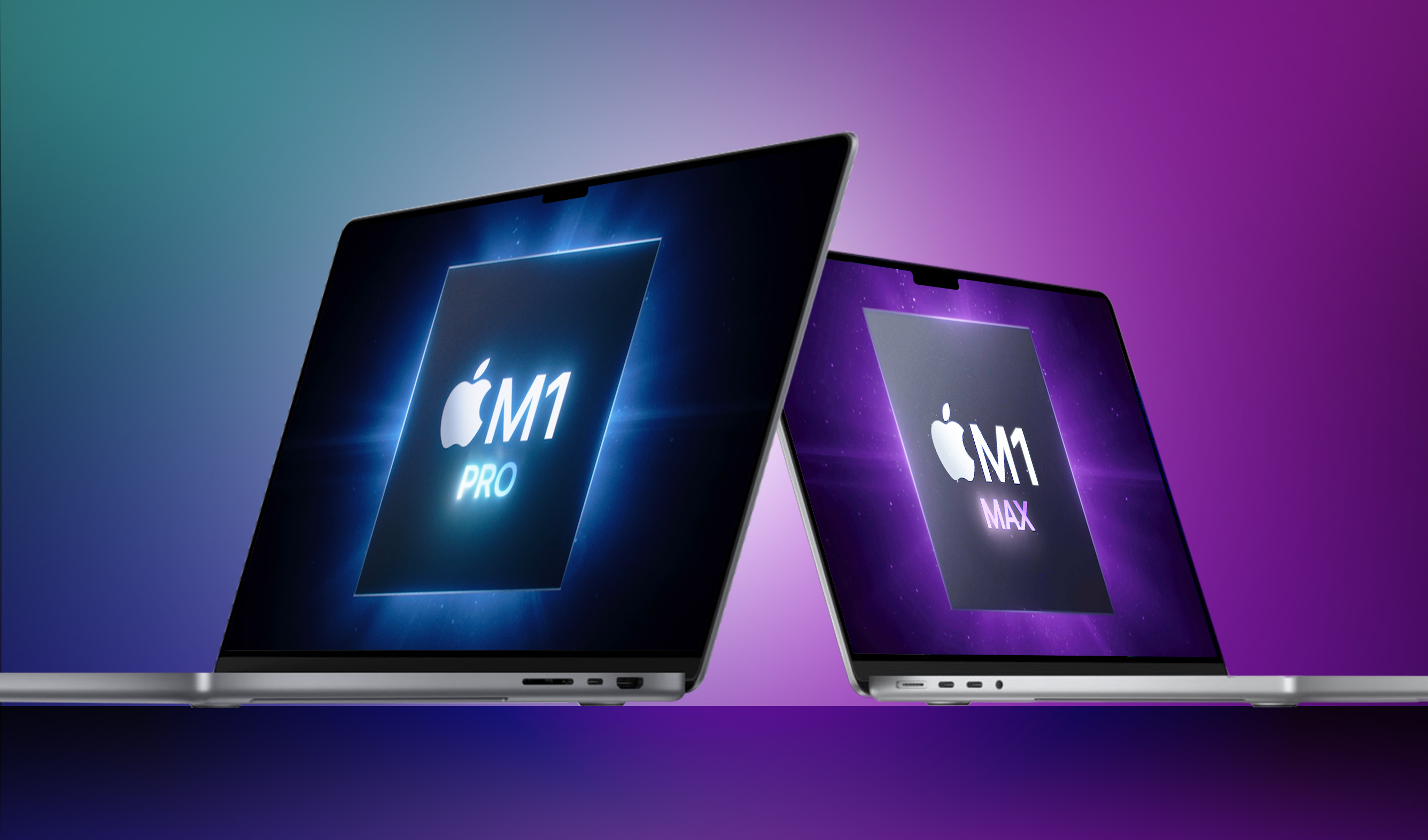
Apple has reintroduced a number of ports that were previously removed from the MacBook Pro, and the new models offer an SDXC card slot, an HDMI 2.0 port, three USB-C Thunderbolt 4 ports, a 3.5mm headphone jack with support for high-impedance headphones, and a MagSafe 3 port that enables a new fast charging feature providing a 50 percent charge within 30 minutes.
The 16-inch MacBook Pro uses a 140W power adapter while the 14-inch models ship with either 67W or 96W power adapters depending on CPU configuration, and both machines can charge over either USB-C or MagSafe.
There are 2x faster SSDs inside the new MacBook Pro models, which are configurable with up to 8TB storage space. The M1 Pro chip supports two external displays with up to 6K resolution at 60Hz, while the M1 Max supports three external displays with up to 6K resolution and one external display with up to 4K resolution at 60Hz.
Thanks to the new M1 Pro and M1 Max chips, the MacBook Pro models feature much improved battery life. The 14-inch MacBook Pro lasts for up to 17 hours when watching movies and up to 11 hours when browsing the web. The 16-inch MacBook Pro lasts for up to 21 hours when watching movies and 14 hours when browsing the web.
Other features include WiFi 6 and Bluetooth 5 support, plus there's a six-speaker sound system with two tweeters, four force-cancelling woofers and wide stereo sound.
The 14-inch MacBook Pro is priced starting at $1,999, while the 16-inch MacBook Pro is priced starting at $2,499.
Note: See an error in this roundup or want to offer feedback? Send us an email here.
How to Buy
Reviews
Performance: M1 Pro and M1 Max
Both the 14-inch and 16-inch MacBook Pro can be configured with either the M1 Pro or M1 Max, with both chips featuring a 10-core CPU. The difference between the chips comes down to graphics, with the M1 Pro available with up to a 16-core GPU and the M1 Max available with up to a 32-core GPU.
The first Geekbench 5 benchmark results for the new MacBook Pro models revealed the M1 Pro and M1 Max chips are over 1.5x faster than the M1 chip in lower-end Macs, while Apple said the M1 Max chip has up to 4x faster graphics than the M1 chip.
Jason Snell shared a useful chart comparing benchmark scores at Six Colors:
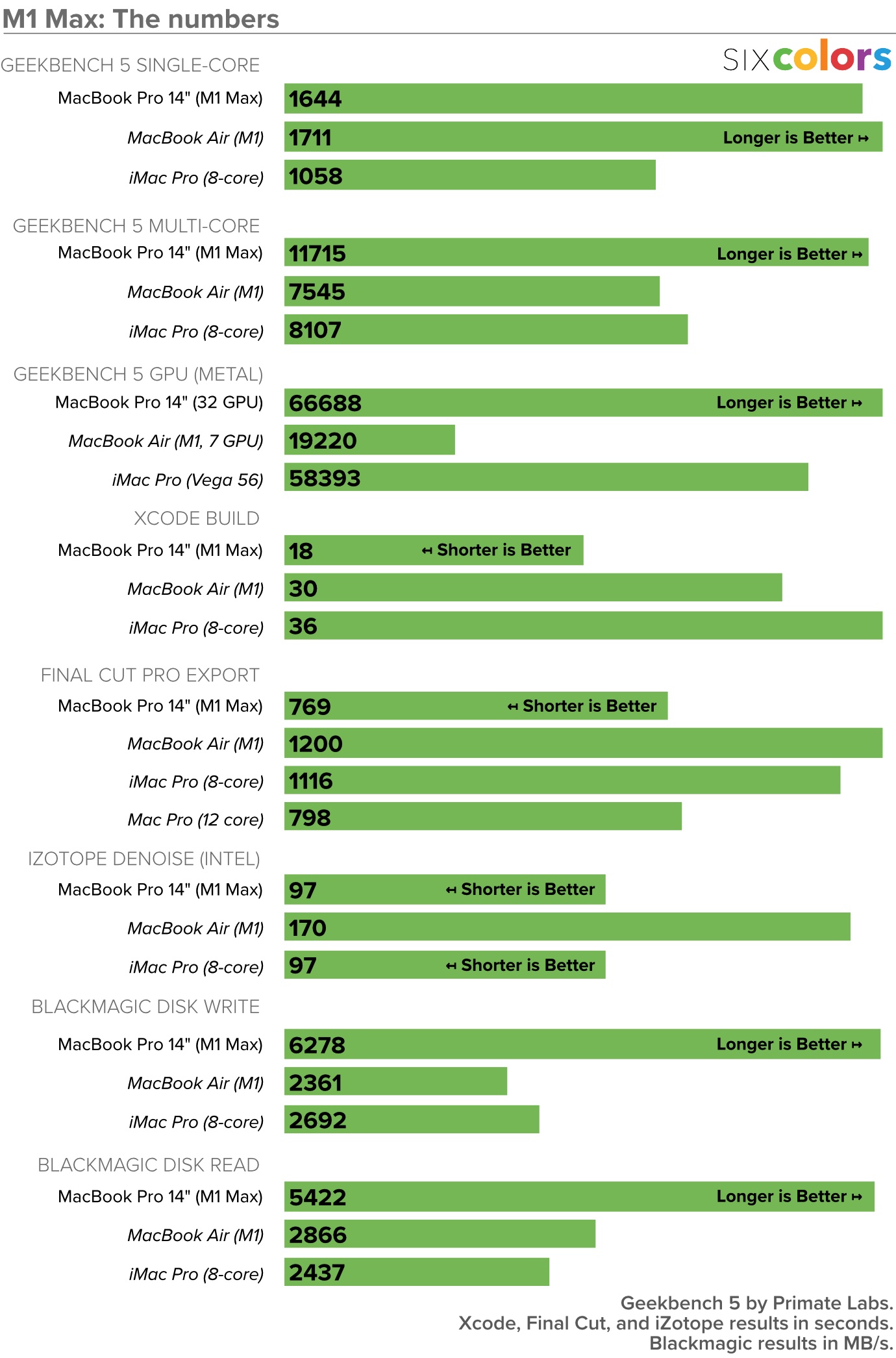
MobileSyrup's Patrick O'Rourke:
In my time with the 14-inch MacBook Pro and its M1 Pro chip, I didn't encounter a single instance of slowdown, even when editing photos with Lightroom and Photoshop CC, while also cutting video in Premiere CC when connected to a 4K HDR external monitor. In fact, the laptop's fans only turned on while exporting a 4K video file.
As we previously reported, 16-inch MacBook Pro models configured with an M1 Max chip feature a new High Power Mode that is designed to maximize performance during intensive, sustained workloads.
Design: Notch, Keyboard, and More
Key design changes to the new MacBook Pro models include a notch at the top of the display that houses an upgraded 1080p webcam, and a revamped keyboard with an all-black design and full-size function keys instead of a Touch Bar.
The Verge's Nilay Patel:
And yes, the display has a notch, which we know will be polarizing, but I very quickly stopped noticing it, just like everyone stops seeing the iPhone notch. We'll see how I feel after another few days with this thing.
CNBC's Todd Haselton:
I like that Apple got rid of the Touch Bar screen up top, which I didn't really find useful on earlier MacBook Pro models, and instead replaced it with full-sized function keys that are easy to tap to adjust the volume, screen brightness and more.
Added Ports: HDMI, SD Card Slot, and MagSafe
Apple has brought back many ports on the 14-inch and 16-inch MacBook Pro models that it had previously removed in 2016, including an HDMI port, an SD card slot, and MagSafe for a magnetic power cable.
CNET's Dan Ackerman:
It's as if Apple designers decided to go through all the feedback they've gotten for years and cherry pick everyone's top handful of wishlist requests (with apologies to whoever wanted mini-DisplayPort or DVI to return). […] HDMI is something people have been asking to get back. It's great to be future-forward, but HDMI remains immensely useful, even if it's transitioning into being more of a legacy port. That's also why we had laptops with VGA ports for so many years after they should have vanished. People have older or legacy devices, like printers, projectors, displays, etc., and they want to be able to plug into those immediately, with a cable common enough that you might luck out and find one buried in the back of a desk drawer.
Displays: Mini-LED and ProMotion
The new MacBook Pro models are equipped with Liquid Retina XDR displays with mini-LED backlighting for up to 3x higher brightness when viewing HDR content, while the addition of ProMotion allows for an adaptive refresh rate between a power-preserving 24Hz and a smooth-looking 120Hz depending on the type of content that is showing on the screen.
Gizmodo's Caitlin McGarry:
The new Pro displays have also been upgraded with the iPad Pro's ProMotion feature, which is so good that it's now upsetting to use a laptop without it. ProMotion, which is turned on by default, makes it so the Pro can adjust its refresh rate between 10Hz and 120Hz, depending on what you're doing. You can turn off ProMotion and use the Pro at a fixed refresh rate (47.95Hz, 48Hz, 50Hz, 59.94Hz, or 60Hz) if you want to, but I tried using it at 60Hz and found the difference too glaring after almost a week at 120Hz. It really is so much smoother with ProMotion turned on.
Battery Life
Apple said the new MacBook Pro models get up to 10 hours longer battery life per charge compared to the previous-generation models.
Engadget's Devindra Hardawar:
[T]he efficiency of the M1 chip's ARM design leads to great battery performance. The 14-inch MacBook Pro lasted 12 hours and 35 minutes in our benchmark, while the 16-inch went for 16 hours and 34 minutes. That's over five hours longer than the last Intel model.
Key Takeaways
With very fast performance, the return of useful ports like HDMI and an SD card slot, and improved displays, the new MacBook Pro models check all of the boxes for a lot of professional users and are a very worthwhile upgrade.
TechCrunch's Brian Heater:
Much like the return of MagSafe, the abandonment of the Touch Bar is a prime example of why the new MacBooks are the best in years. They build on the technologies and learnings of previous generations introduce some key breakthroughs and, perhaps, most importantly, listened to user feedback. That means moving on from what doesn't work and doubling down on what does, and above all, not ever assuming you know what's best for the consumer — particularly in the case of extremely particular creative pros. Priced between $1,999 and $5,899, this is very much not the MacBook for everyone. For most consumers, the MacBook Air gets the job done — and then some. But if you're someone who regularly finds yourself pushing your machine to the limits, the new Pro is a great marriage of the line's best elements.
See our full review roundup or collection of unboxing videos for more thoughts on Apple's latest high-end laptops.
Issues
Design
The MacBook Pro has been redesigned inside and out, and in many ways, it's an homage to older Macs both with its look and its feature set. The MacBook Pro continues to use the same aluminum unibody design (and come in silver or space gray), but the overall shape of the machine is flatter and less curved at the bottom.
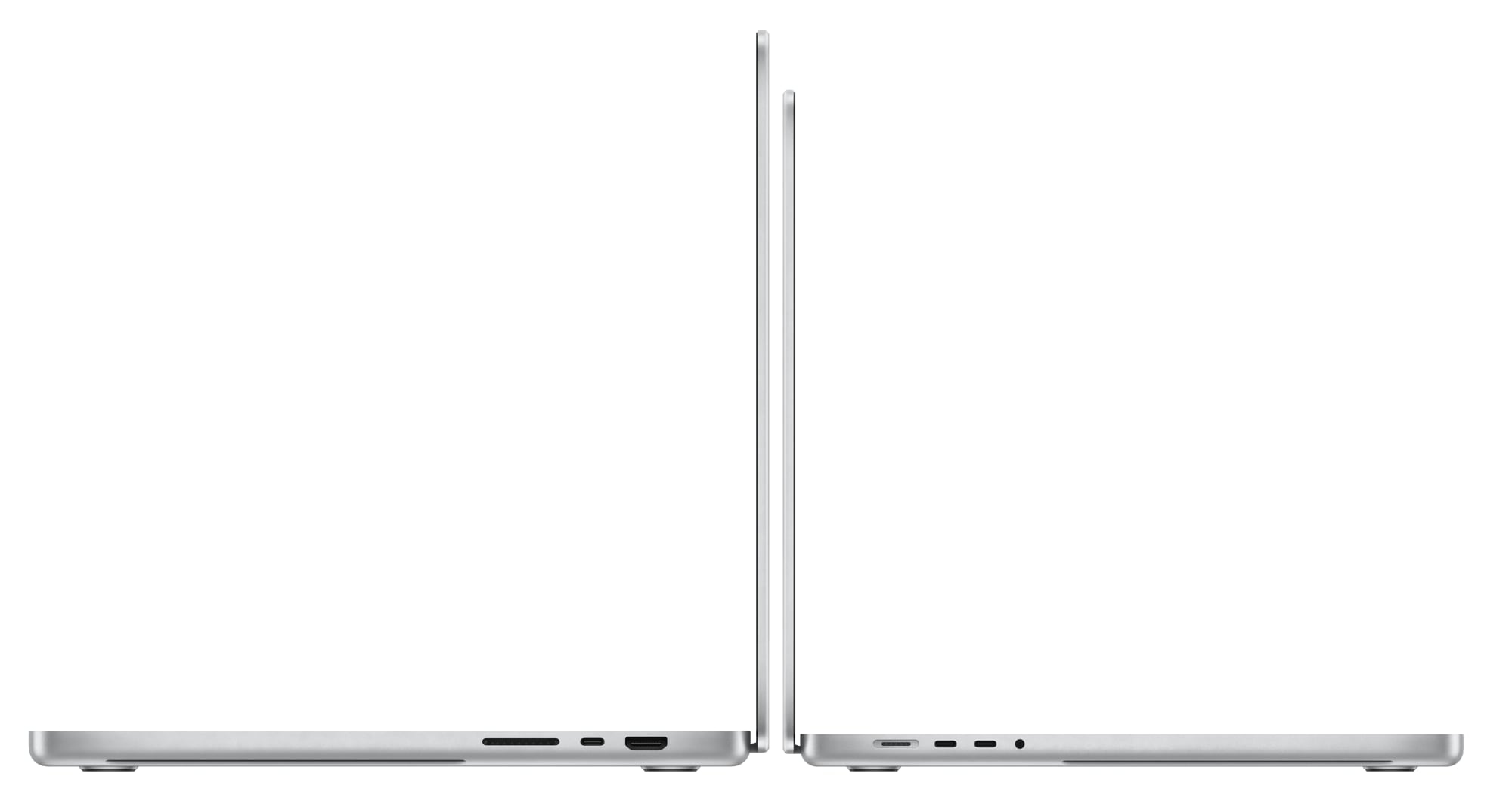
There are no radical changes here, and these machines are immediately recognizable as MacBook Pros. There are four feet on the bottom to add a small amount of lift, and the corners have a more curved look than before.

Available in 14 and 16-inch sizes, the MacBook Pro features slim bezels at the top and the sides, a notch at the top for the camera, an overhauled keyboard that's all black, a large trackpad, and additional ports at the left and right sides. There continues to be a large Force Touch trackpad, and there are two speaker grilles at the sides of the keyboard.
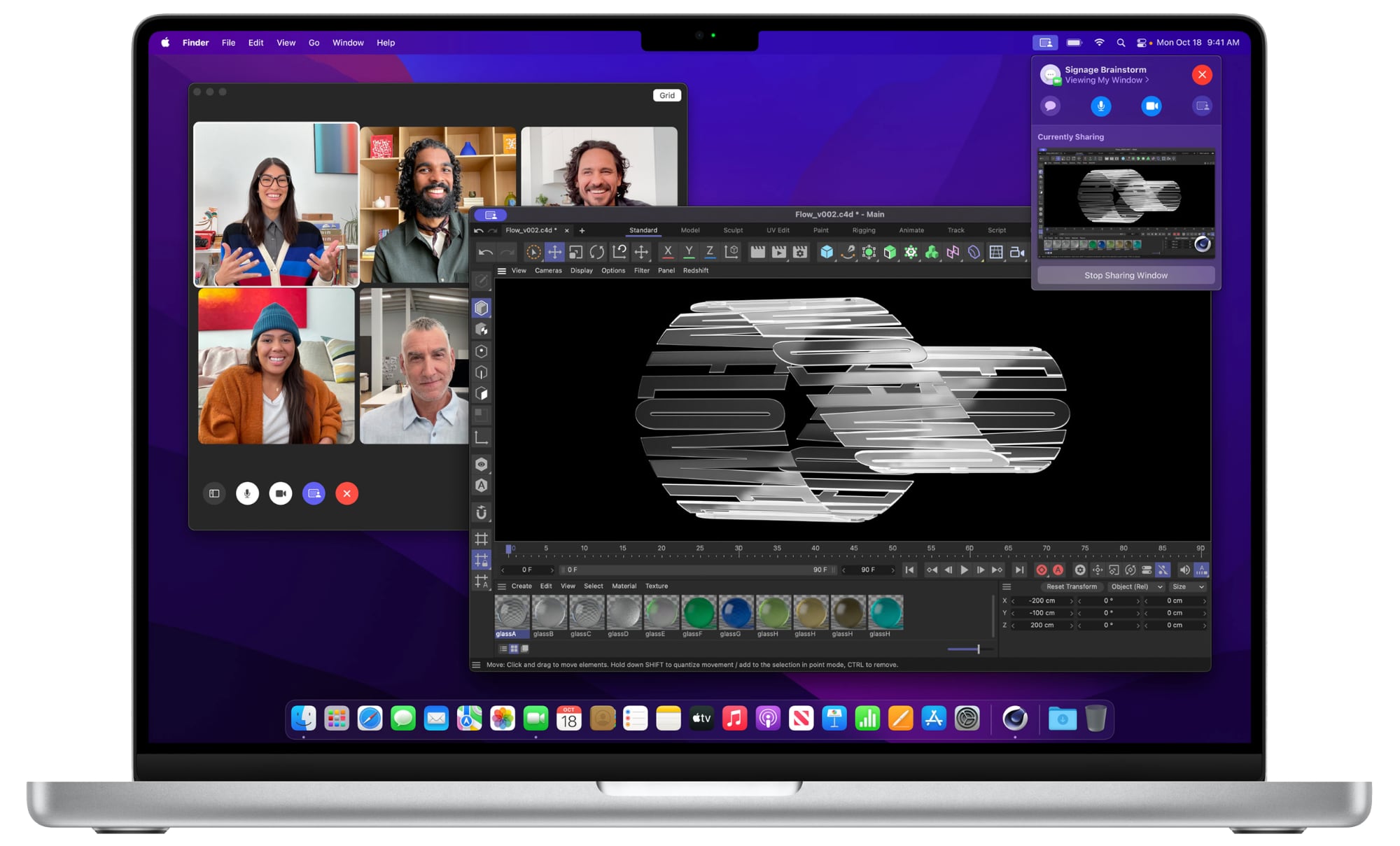
Compared to their prior-generation Intel counterparts, the new MacBook Pro models are heavier, and the 16-inch model is thicker. The 14-inch model measures in at 12.31 inches long, 8.71 inches wide, and 0.61 inches thick, and it weighs in at 3.5 pounds. It's larger than the prior model in every dimension, but it is just about the same thickness.
The 16-inch model measures in at 14.01 inches long, 9.77 inches wide, and 0.66 inches thick, so it is a tad shorter, but also a tad wider and a little but thicker (the prior model was 0.64 inches thick). It weighs in at 4.7 pounds, which is 0.4 pounds heavier than the 2019 16-inch MacBook Pro that it replaces.

It's worth noting that 16-inch machines with the M1 Max chip will be just a bit heavier than machines with the M1 Pro chip because of the size of the chip.
There is a logo on the top casing of the machine as is standard, but the "MacBook Pro" labeling that used to be below the display has been removed. It has been relocated to the bottom of the MacBook Pro.
Internally, the design of the MacBook Pro optimizes internal space and is machined around an advanced thermal system that is able to move 50 percent more air than the previous-generation machines, even when fan speeds are lower.
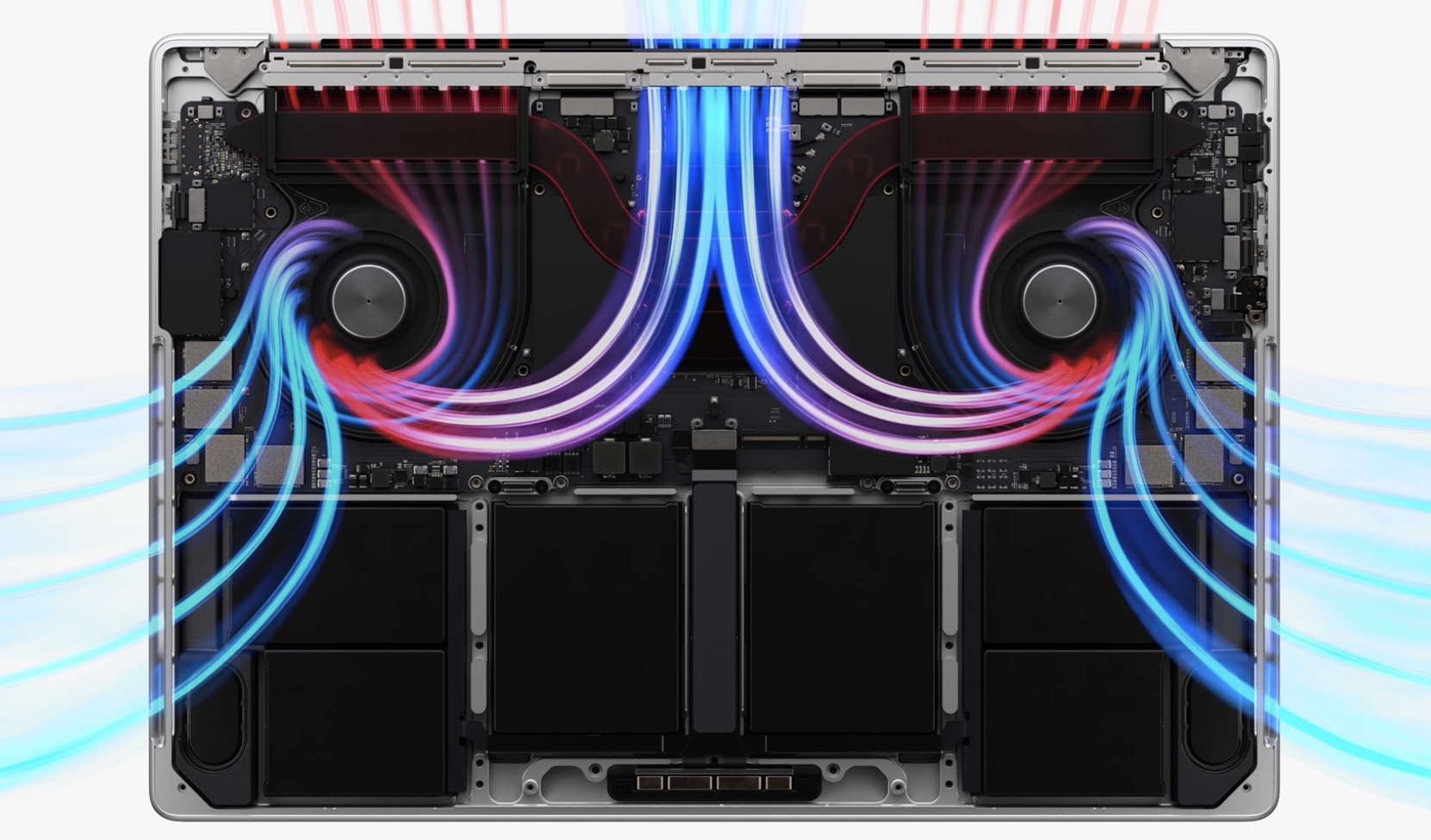
Apple says that the new thermal design lets the MacBook Pro provide "phenomenal" sustained performance while remaining cool and quiet. For most everyday tasks, the fans will not turn on.
Display
Both MacBook Pro models are equipped with a "Liquid Retina XDR (Extreme Dynamic Range) display," which uses the same mini-LED technology introduced in the 12.9-inch iPad Pro. The 16-inch MacBook Pro actually features a 16.2-inch display with a 3456-by-2234 native resolution at 254 pixels per inch.
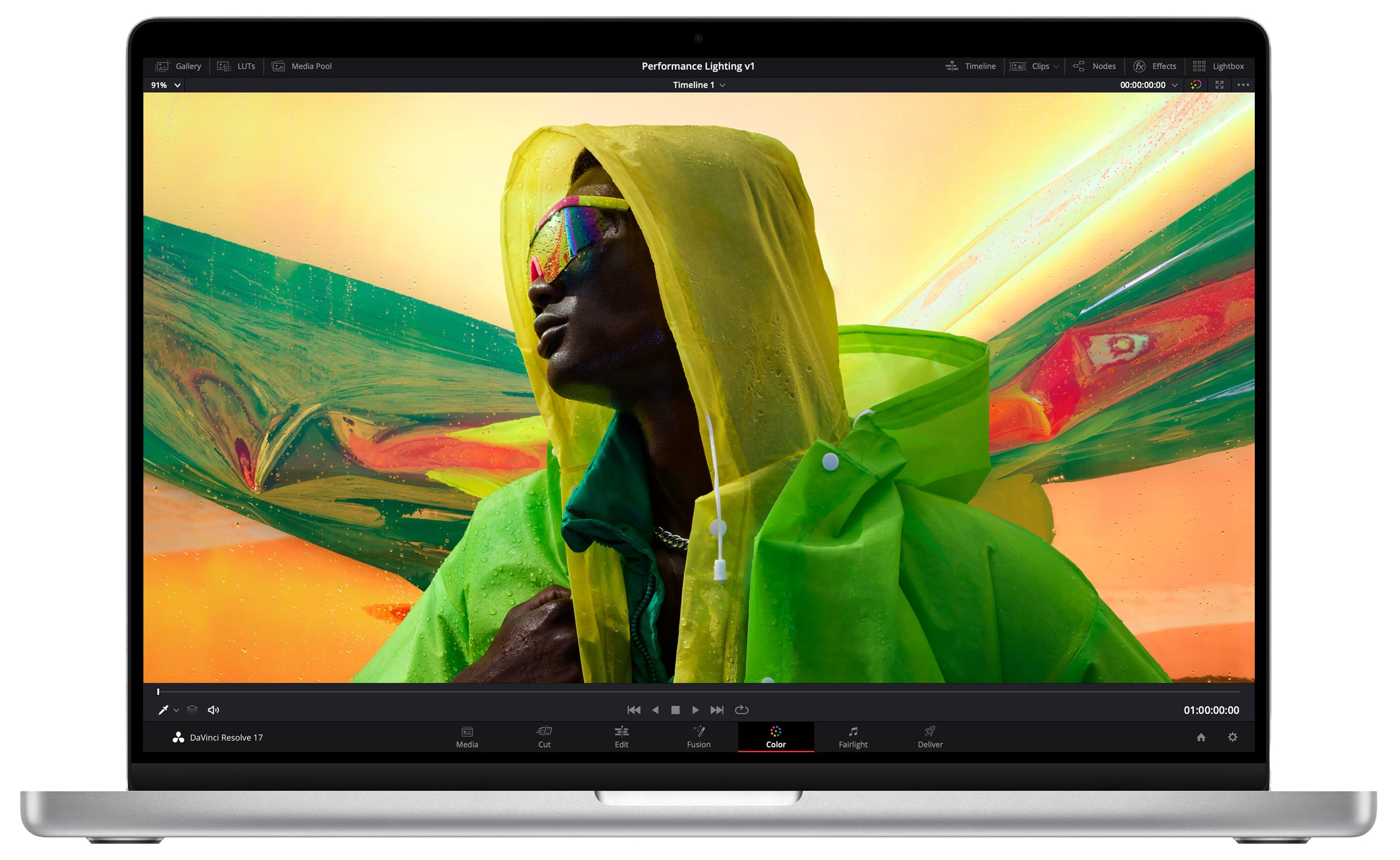
The 14-inch MacBook Pro features a 14.2-inch display with a 3024-by-1964 native resolution at 254 pixels per inch. Aside from differences in size and the resulting difference in resolution, the displays of the 14 and 16-inch models are identical.
Both are using mini-LED technology with 1,000 nits sustained brightness and 1,600 nits peak brightness, with a contrast ratio of 1,000,000:1. The displays offer support for a billion colors, along with P3 Wide color for bright, true-to-life colors. It is possible to calibrate the display for even better accuracy if needed.
According to Apple, users can expect HDR content to come to life with more detail in shadows, brilliant highlights, deeper blacks, and more vivid colors than were previously available. This is enabled through the 10,000 mini-LEDs that are grouped into individually controlled local dimming zones.
When displaying SDR content, the display can deliver a peak brightness of 500 nits. The display's 1,600 nits peak brightness capability is reserved for HDR content only.
True Tone, a feature that is designed to match the white balance of the display to the ambient lighting in the room, is supported. Apple devices have used True Tone for years, and it is designed to make viewing a Mac's screen easier on the eyes because it takes into account outside lighting and color temperature.
Notably, the new MacBook Pros support ProMotion technology for adaptive refresh rates ranging from 24Hz to 120Hz. When viewing a static webpage that doesn't require a high refresh rate, the MacBook Pro's display adopts the lower refresh rate to preserve battery life, but when gaming, scrolling, or doing other activities where a higher refresh rate will result in smoother content, the higher frame rates will kick in.
- How to Change the Refresh Rate on Your MacBook Pro Display
Bezels on both machines measure in at 3.5mm for the top and sides, but there is a notch below the top bezel that accommodates the front-facing camera. Overall, the display enclosure is less than 4mm thick.
Keyboard and Trackpad
Apple overhauled the keyboard of the new MacBook Pro, and it features an all-black base that does away with the lighter aluminum that used to be between the keys on prior models.
The keyboard no longer features an OLED Touch Bar, with Apple instead replacing it with a full-sized row of 12 function keys and a much larger Escape key on the left. On the right, there's a Touch ID key that features a circle-shaped Touch ID fingerprint reader.
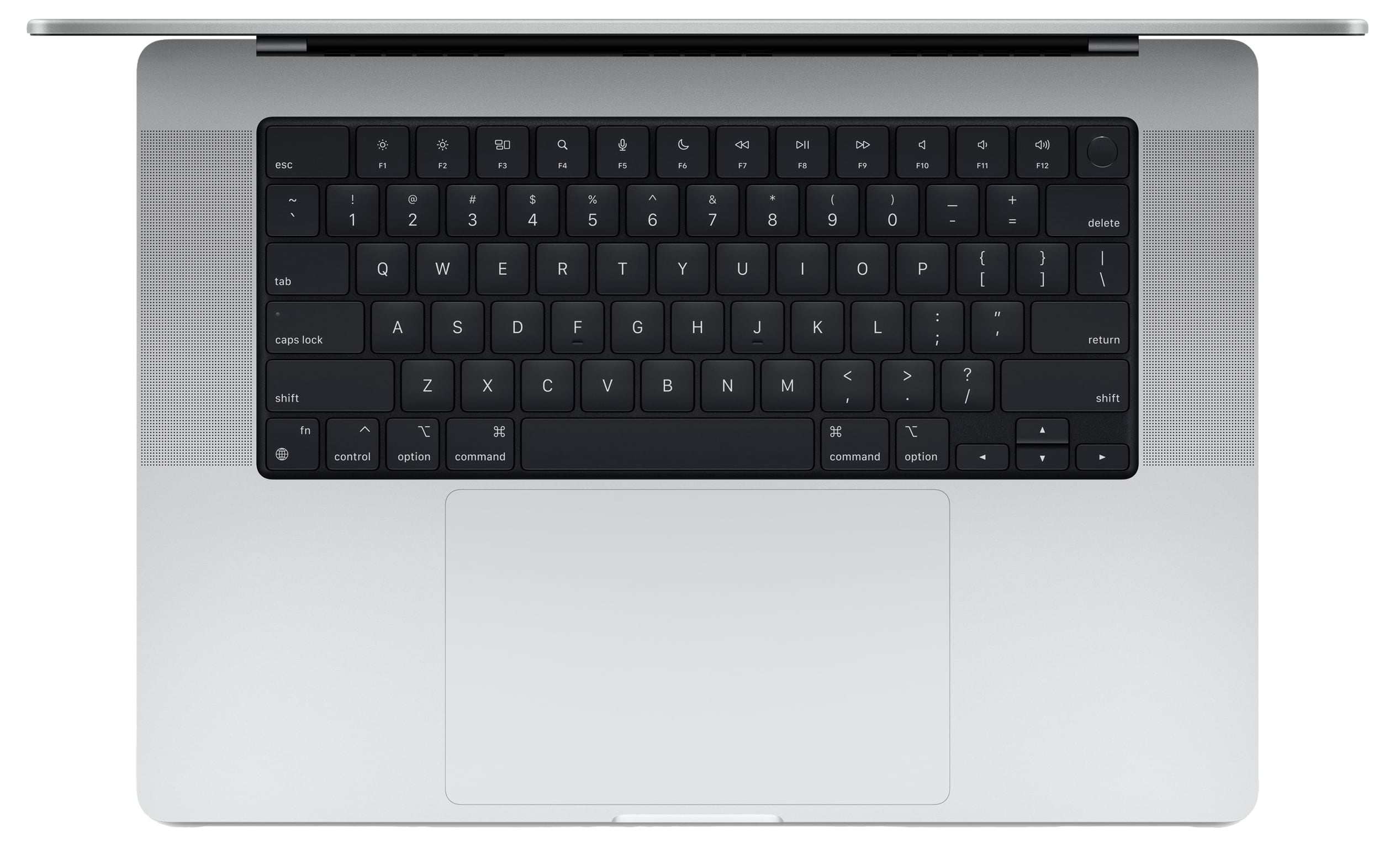
Apple used arrow keys in the traditional inverted T-arrangement, and it is worth noting that this is a scissor switch keyboard that is more durable than the butterfly keyboard that Apple used in some prior MacBook Pro models. It will hold up better to crumbs, dust, and debris, which could cause failure with the older MacBook Pro keyboards.
All of the keys are backlit and adjust based on the lighting in the room thanks to an ambient light sensor.
Below the keyboard, there's a large Force Touch trackpad that is unchanged from prior models. The Force Touch trackpad has no traditional buttons and is powered by a set of Force Sensors, allowing users to press anywhere on the trackpad to get the same response. A Taptic Engine powered by magnets provides users with tactile feedback when using the trackpad, replacing the feel of a physical button press.
The Force Touch trackpad supports a light press, which is used as a regular click, along with a deeper press or "force click" as a separate gesture that does things like offer up definitions for a highlighted word.
Ports
With the introduction of the 2016 MacBook Pro, Apple eliminated all ports besides Thunderbolt/USB-C ports, but with the 2021 refresh, Apple brought some of them back.
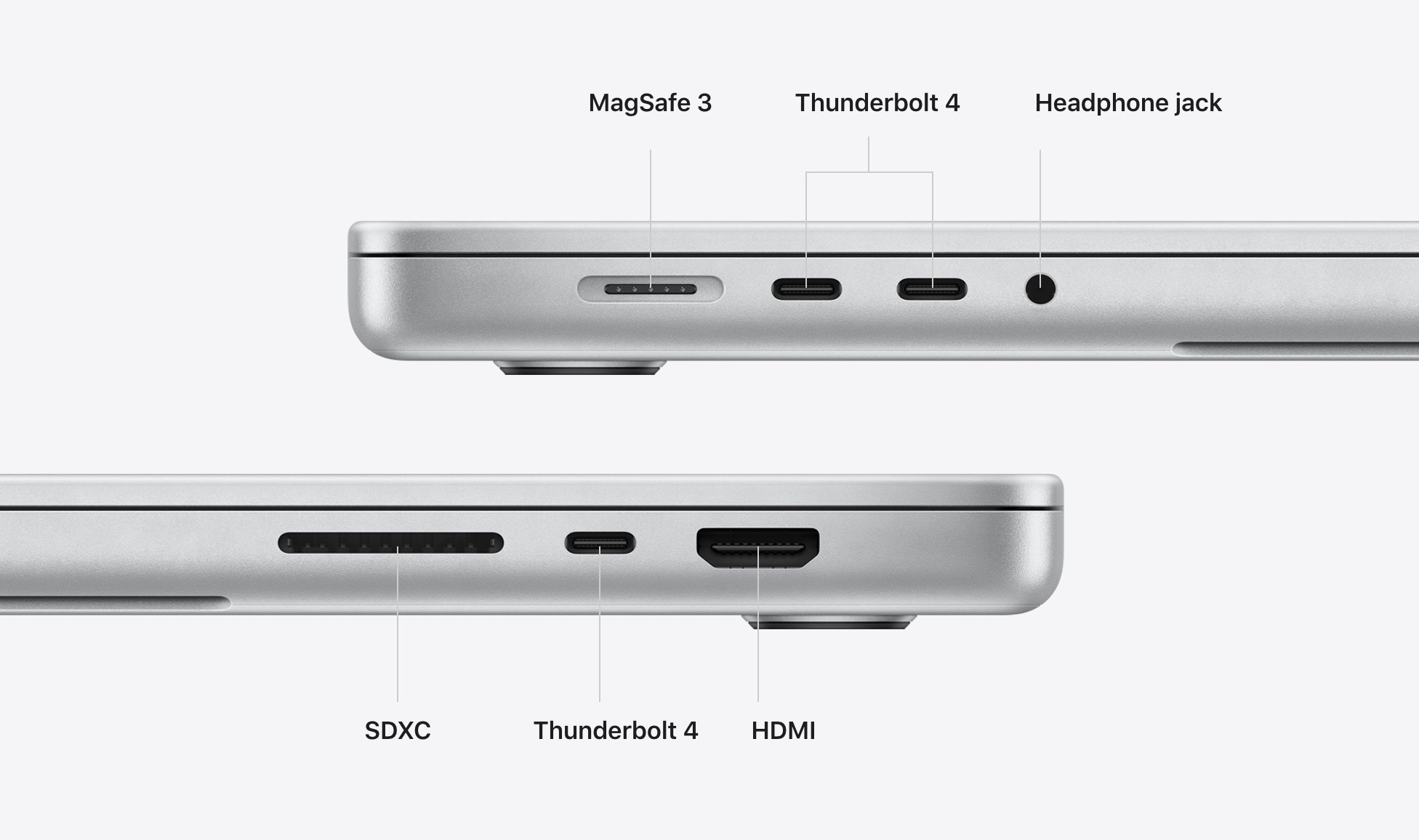
The MacBook Pro models are equipped with an SDXC card slot (which supports UHS-II with speeds up to 250MB/s and UHS-I SD cards with speeds up to 90MB/s), an HDMI 2.0 port that supports a 4K display at up to 60Hz, a 3.5mm headphone jack with added support for high-impedance headphones, and three Thunderbolt 4 (USB-C) ports that support speeds of up to 40Gb/s in addition to serving as a DisplayPort and allowing for charging.
Apple also brought back the MagSafe port and an accompanying braided MagSafe cable for charging. The MagSafe port is almost identical to the MagSafe port that was used prior to 2016, offering up a breakaway design that causes the cable to disconnect if it's pulled.
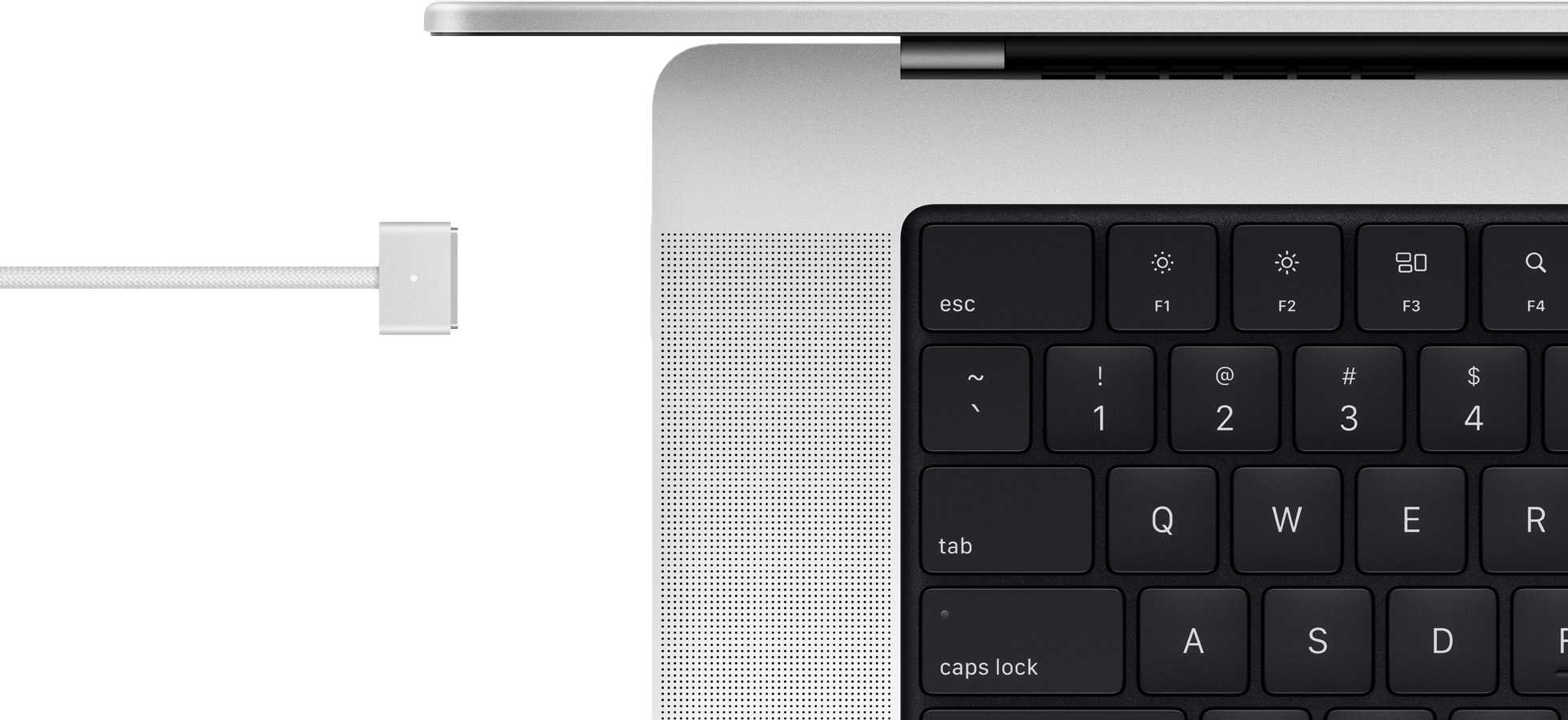
The MagSafe port also offers faster charging on the 16-inch machine, but both machines can charge over MagSafe or the Thunderbolt ports.
M1 Pro and M1 Max Chips
Apple designed two Apple silicon chips for the MacBook Pro models, the M1 Pro and the M1 Max, both of which are more powerful versions of the M1 chip that Apple introduced in 2020. Built on 5-nanometer architecture, the M1 Pro has 33.7 billion transistors and the M1 Max has 57 billion.
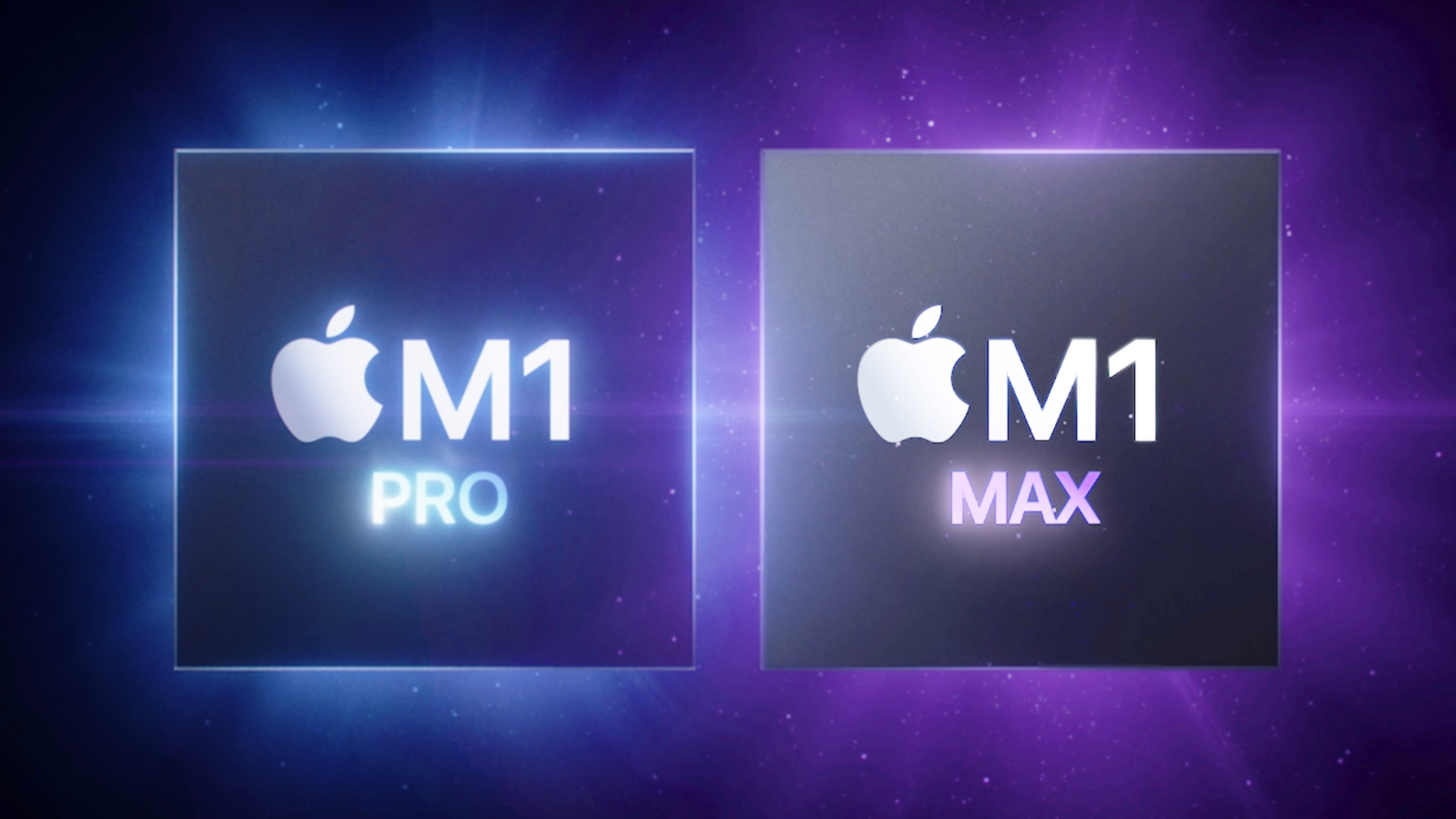
The M1 Pro and the M1 Max feature a 10-core CPU that includes eight high power cores and two high-efficiency cores, though it's worth noting that the base 14-inch MacBook Pro has an 8-core version of the M1 Pro chip that is 20 percent slower than the 10-core versions. All other models use the 10-core CPUs.
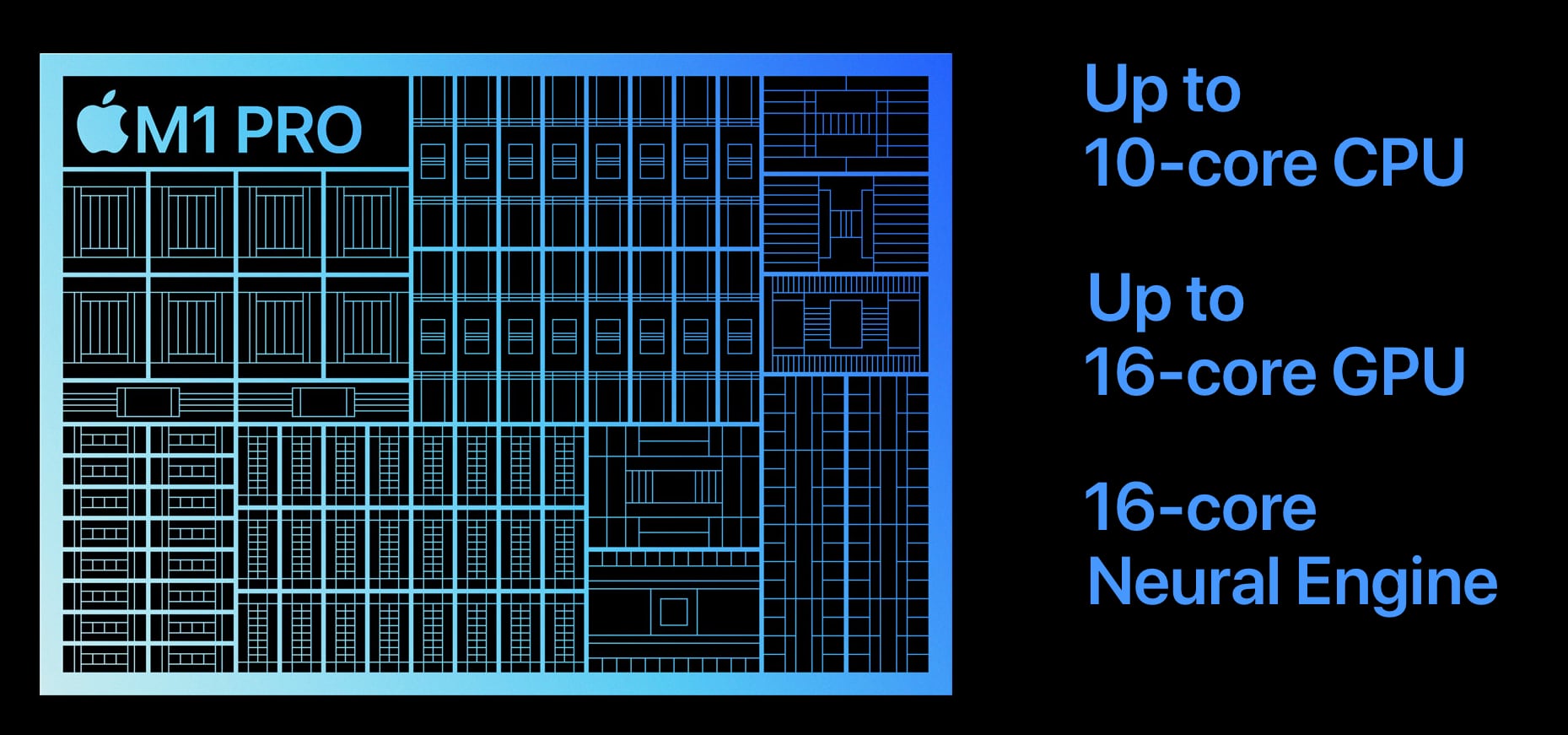
CPU performance is the same between the two chips, but one is the "Pro" and one is the "Max" because there are differences when it comes to graphics performance. The M1 Pro chip features a 16-core GPU (14-cores in the base model), while the M1 Max features a 32-core GPU with a lower tier 24-core option also available as an upgrade for the middle-tier 14 and 16-inch machines.
The M1 chip has an 8-core CPU and an 8-core GPU, so there are improvements in CPU performance and incredible leaps in graphics performance to handle pro workloads.
The CPU in the M1 Pro and M1 Max chips is 70 percent faster than CPU performance from the M1, which was already screaming fast and outperforming many PCs with competing processors. As for GPU performance, the M1 Pro is up to 2x faster than the M1, and the M1 Max is up to 4x faster than the M1.
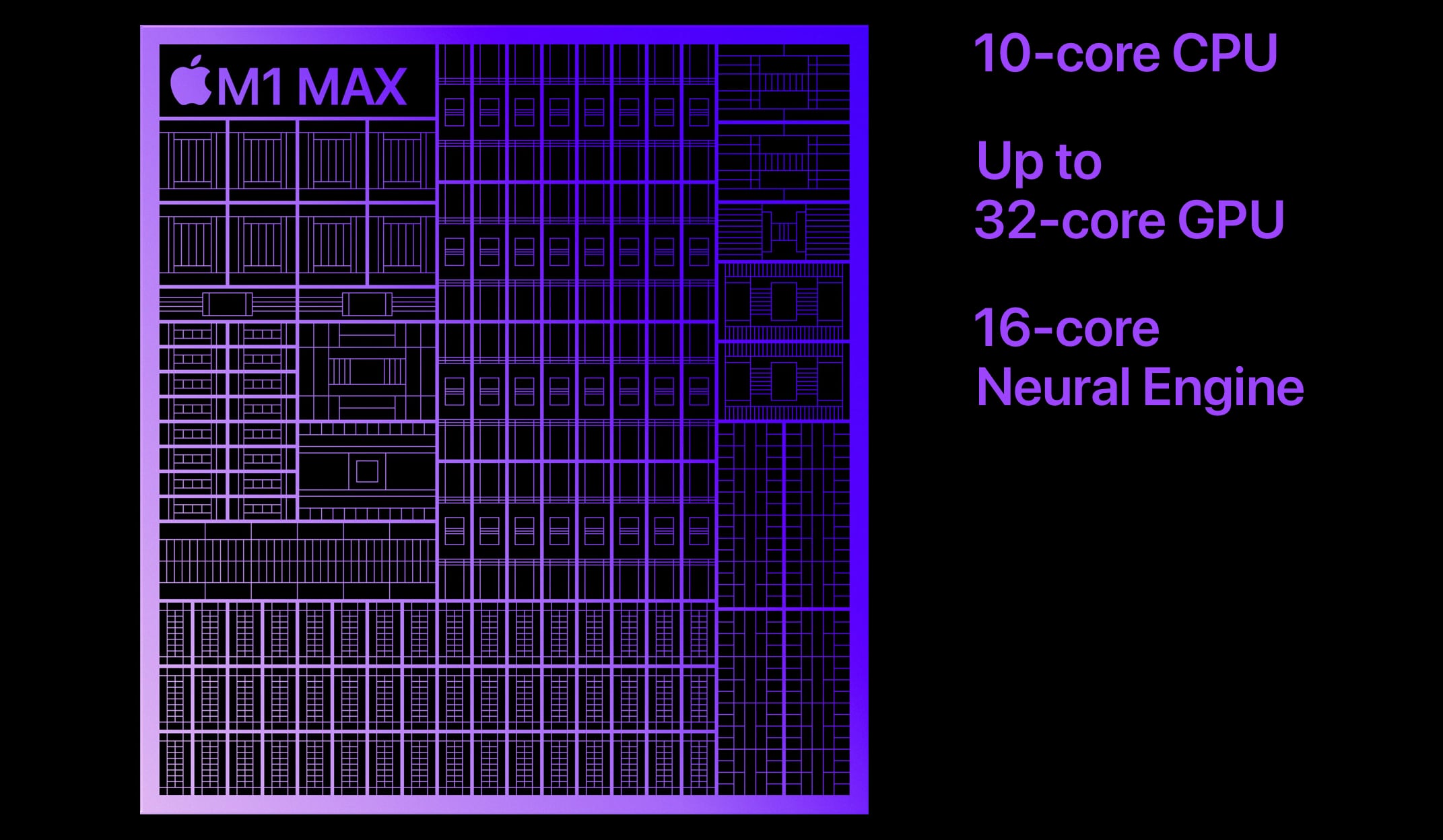
According to Apple, the M1 Pro delivers 1.7x more CPU performance than the latest 8-core PC laptop chip while using 70 percent less power, and the GPU is up to 7x faster than the integrated graphics on the same PC computer. GPU performance is on par with a powerful discrete GPU in a PC, but the M1 Pro uses 70 percent less power.
As for the M1 Max, it is the largest chip that Apple has built to date. Apple says the chip's GPU offers performance comparable to a high-end GPU in a compact pro PC laptop while consuming up to 40 percent less power. Performance is similar to the highest-end GPU in the largest PC laptops while using up to 100 watts less power.
According to Apple, the M1 Pro and M1 Max are able to deliver the same level of performance whether plugged in or using the battery thanks to the efficiency of the chips. The M1 Pro and Max chips generate less heat than standard Intel chips, allowing the new MacBook Pro models to run quietly and less often.
- M1 Pro vs. M1 Max Buyer's Guide
Media Engine
Apple added a media engine to the two Apple silicon chips to speed up video processing while preserving battery life. The M1 Pro offers dedicated acceleration for the ProRes video codec, along with video encode/decode engines and hardware accelerated support for H.264, HEVC, ProRes, and ProRes Raw.
The M1 Max has the same capabilities, but it includes two video encode engines and two ProRes encode and decode engines for even faster performance for pro tasks.
Using the M1 Max, the MacBook Pro can transcode ProRes video in Compressor 10x faster than the prior-generation 16-inch MacBook Pro was capable of.
Memory
Like the M1, the M1 Pro and M1 Max use a system-on-a-chip architecture with unified memory and unmatched power efficiency. The M1 Pro supports up to 32GB unified memory, and the M1 Max supports up to 64GB unified memory, though base models ship with 16GB and 32GB, respectively. Apple's Pro chip also provides 200GB/s memory bandwidth, while the Max chip delivers up to 400GB/s.
The memory bandwidth of the M1 Max is 2x that of the M1 Pro and close to 6x that of the M1 chip.
Custom Technologies
There's a 16-core Neural Engine built into the M1 Pro and Max chips that handles machine learning acceleration and boosts camera performance alongside the custom image signal processor, plus there's a display engine that can drive multiple external displays.
The M1 Pro supports up to two external displays at up to 6K resolution at 60Hz, while the M1 Max supports up to three external displays with up to 6K resolution and one external display with up to 4K resolution at 60Hz.
There are additional integrated Thunderbolt controllers for more I/O bandwidth, and a built-in Secure Enclave provides features like hardware-verified secure-boot and runtime anti-exploitation features.
High Power Mode
The 16-inch MacBook Pro models with M1 Max chip have a "High Power" mode that's designed for intensive, sustained workloads. In this mode, performance will be optimized for system-intensive tasks, which can result in louder fan noise.
High Power Mode can be enabled in System Preferences under Battery > Power Adapter > Energy Mode when connected to a power source or under Battery > Battery > Energy Mode when running on battery.
Fine print in System Preferences indicates that High Power Mode may result in louder fan noise, suggesting that the feature allows the M1 Max chip to run hotter and ramps up fan speeds to accommodate this.
Apple says that High Power mode is designed to maximize performance during intensive, sustained workloads, providing users with "extreme performance" for tasks like color grading 8K ProRes video.
High Power Mode is not available on the 14-inch MacBook Pro, even when configured with an M1 Max chip, or on any models with an M1 Pro chip.
- How to Use High Power Mode on 16-inch M1 Max MacBook Pro
Other Features
Speakers
There's a high-fidelity six-speaker sound system in the MacBook Pro that includes two tweeters and four force-cancelling woofers for 80 percent more bass. Apple says it is the best audio system in a notebook.
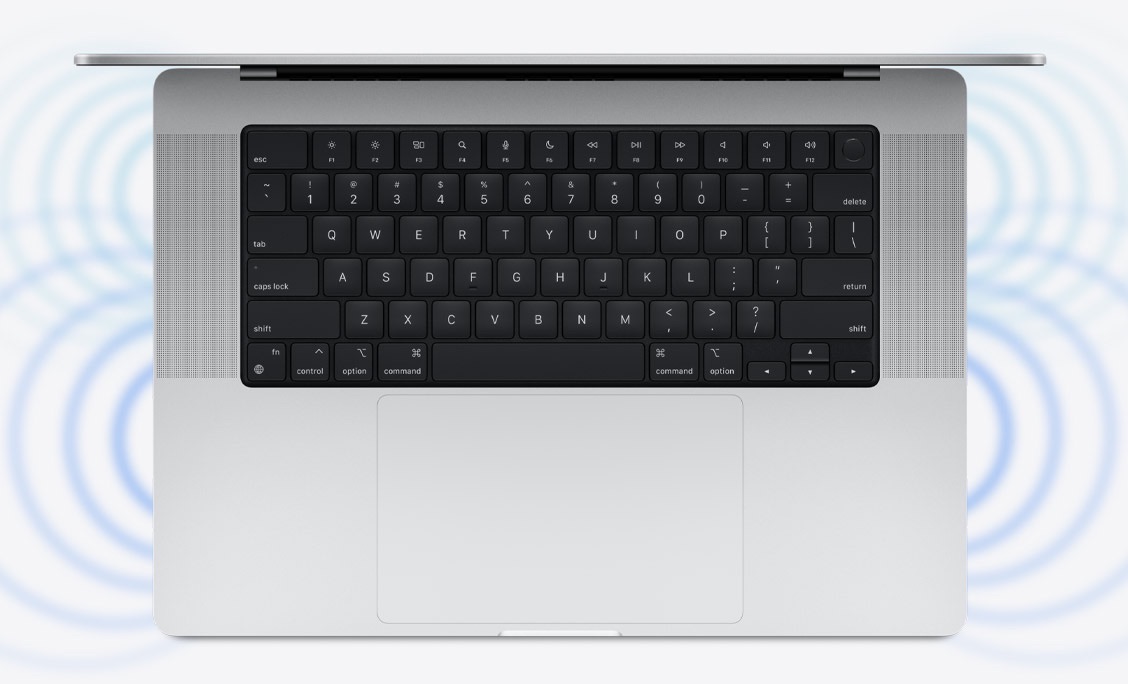
The speaker system supports wide stereo sound, and the MacBook Pro offers support for spatial audio when playing music or video with Dolby Atmos on the built-in speakers. When connected to the AirPods 3, AirPods Pro, or AirPods Max, dynamic head tracking is supported.
There's also a three-microphone array that supports a high signal-to-noise ratio with a 60 percent lower noise floor that can capture even subtle sounds. Directional beamforming allows for crisp, clear voice sound.
SSDs
Apple added 2x faster SSDs to the new MacBook Pro, with both models offering up to 8TB of storage space. The SSDs support speeds up to 7.4GB/s.
Camera
Apple added an improved 1080p camera to the MacBook Pro, which is bolstered by the image signal processor built into the M1 Pro and Max. The image signal processor makes sure images are sharp, and allows for natural-looking skin tones, plus the camera itself brings better low-light performance.
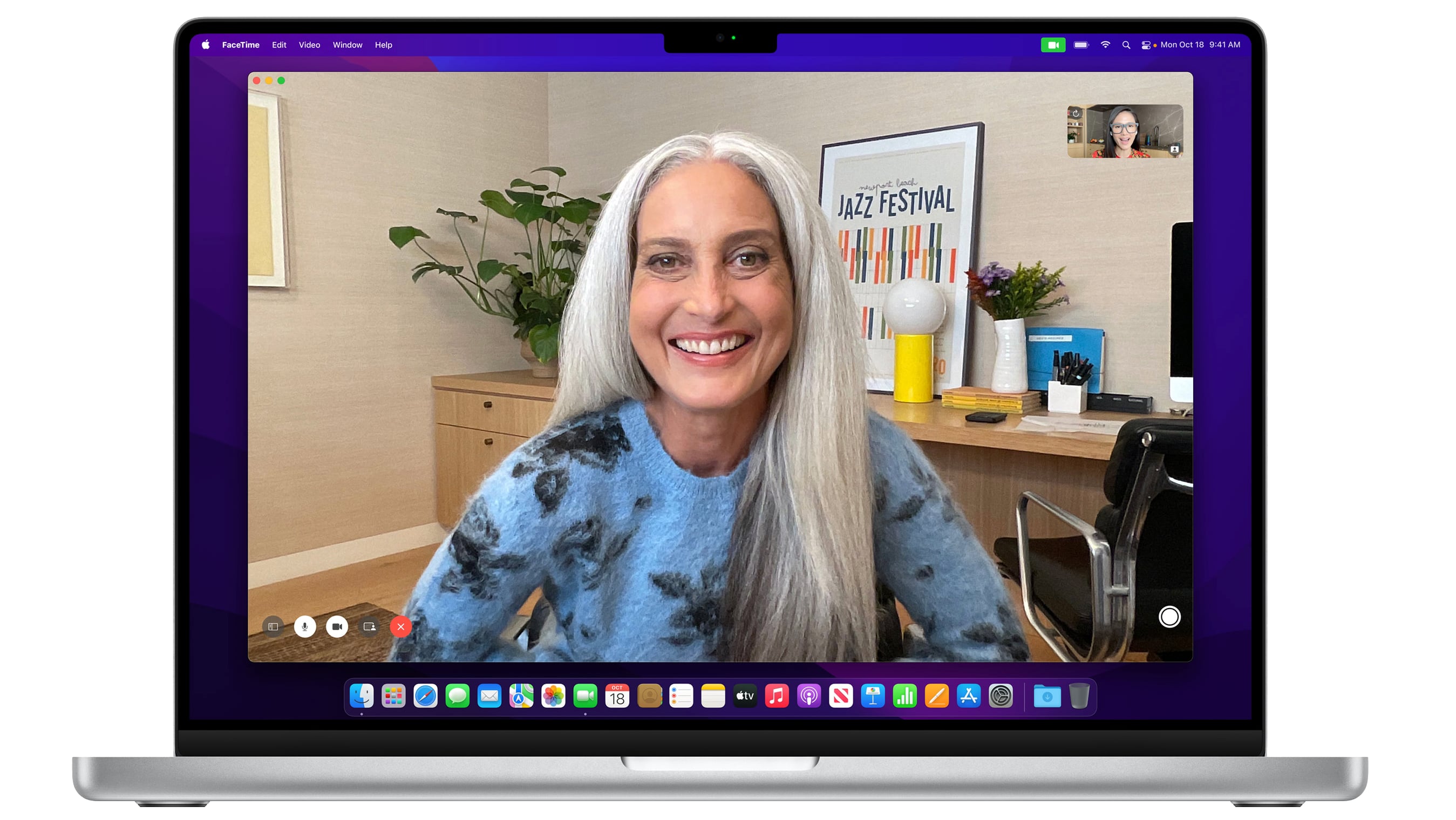
Wireless Connectivity
The MacBook Pro supports 802.11ax WiFi 6 connectivity and Bluetooth 5.0, the latest WiFi and Bluetooth protocols. There is no WiFi 6E support, which adds a 6GHz band to the WiFi 6 standard.
Battery Life
Both MacBook Pro models offer impressive battery life compared to their Intel counterparts.
The 14-inch MacBook Pro with M1 Pro/Max chip offers up to 17 hours of movie playback with the Apple TV app and up to 11 hours of wireless web browsing. The prior 2020 Intel model offered 10 hours of movie playback and 10 hours of wireless web browsing.
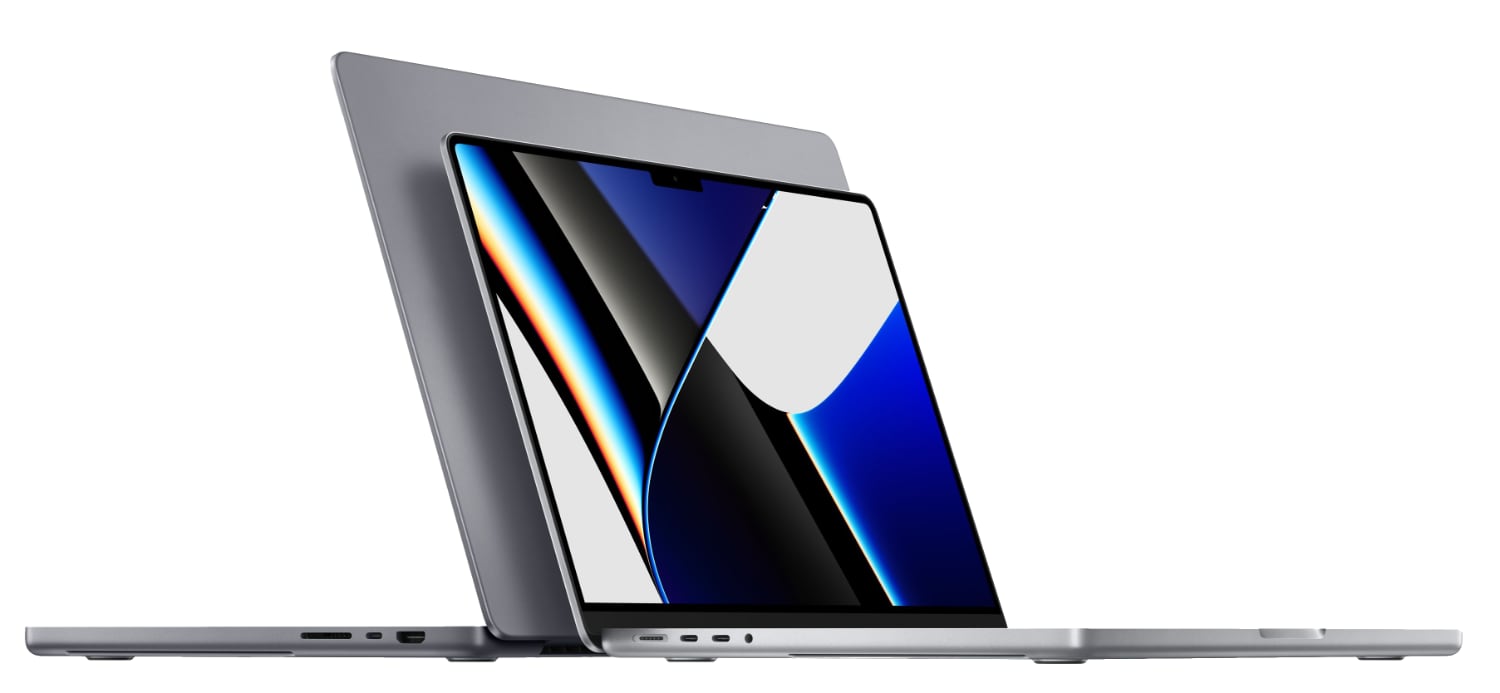
The 16-inch MacBook Pro offers up to 21 hours of movie playback and 14 hours of wireless web browsing. The prior 16-inch Intel machine offered 11 hours of movie playback and 11 hours of wireless web usage, so the gains are notable.
Apple's 14-inch MacBook Pro is equipped with a 70-watt-hour lithium-polymer battery, and the 16-inch model includes a 100-watt hour battery as that is the maximum size allowable on airlines.
The 16-inch MacBook Pro uses a 140W power adapter, while the 14-inch model uses a 67W power adapter for the 8-core machine and a 96W power adapter for the 10-core machine. All models can charge over Thunderbolt or MagSafe and ship with their respective power adapters and a USB-C to MagSafe cable.
The 10-core 14 and 16-inch MacBook Pro models are capable of charging from zero to 50 percent within 30 minutes through a new fast charge feature. The 14-inch model can fast charge over Thunderbolt or MagSafe with the 96W power adapter, while the 16-inch model needs the MagSafe connection for fast charging because of the limitations of USB-C.
Available Models
There are two stock configurations of the 14-inch MacBook Pro and three stock configurations of the 16-inch MacBook Pro.
14-Inch MacBook Pro
- $1,999 - M1 Pro with 8-Core CPU, 14-Core GPU, 16GB Memory, 512GB SSD.
- $2,499 - M1 Pro with 10-Core CPU, 16-Core GPU, 16GB Memory, 1TB SSD.
16-Inch MacBook Pro
- $2,499 - M1 Pro with 10-Core CPU, 16-Core GPU, 16GB Memory, 512GB SSD.
- $2,699 - M1 Pro with 10-Core CPU, 16-Core GPU, 16GB Memory, 1TB SSD.
- $3,499 - M1 Max with 10-Core CPU, 32-Core GPU, 32GB Memory, 1TB SSD.
Build to Order Options
In most of the MacBook Pro models, the M1 Pro chip can be upgraded, and there are also upgrades for the SSD and the memory. Options per model and pricing are available below.
Base Model 14-Inch MacBook Pro Upgrade Options
- M1 Pro with 10-Core CPU and 14-Core GPU - +$200
- M1 Pro with 10-Core CPU and 16-Core GPU - +$300
- M1 Max with 10-Core CPU and 24-Core GPU - +$500
- M1 Max with 10-Core CPU and 32-Core GPU - +$700
- 32GB Memory - +$400
- 1TB SSD - +$200
- 2TB SSD - +$600
- 4TB SSD - +$1200
- 8TB SSD - +$2400
- 96W Power Adapter - +$20
High-End 14-Inch MacBook Pro Upgrade Options
- M1 Max with 10-Core CPU and 24-Core GPU - +$200
- M1 Max with 10-Core CPU and 32-Core GPU - +$400
- 2TB SSD - +$400
- 4TB SSD - +$1000
- 8TB SSD - +$2200
Base Model 16-Inch MacBook Pro Upgrade Options
- M1 Max with 10-Core CPU and 24-Core GPU - +$200
- M1 Max with 10-Core CPU and 32-Core GPU - +$400
- 32GB Memory - +$400
- 64GB Memory - +$800 (Max Required)
- 1TB SSD - +$200
- 2TB SSD - +$600
- 4TB SSD - +$1200
- 8TB SSD - +$2400
Middle Tier 16-Inch MacBook Pro Upgrade Options
- M1 Max with 10-Core CPU and 24-Core GPU - +$200
- M1 Max with 10-Core CPU and 32-Core GPU - +$400
- 32GB Memory - +$400
- 64GB Memory - +$800 (Max Required)
- 2TB SSD - +$400
- 4TB SSD - +$1000
- 8TB SSD - +$2200
High-End MacBook Pro Upgrade Options
- 64GB Memory - +$400
- 2TB SSD - +$400
- 4TB SSD - +$1000
- 8TB SSD - +$2200
13-Inch MacBook Pro
The 14 and 16-inch MacBook Pro are middle-tier and high-end options that are being sold alongside the more affordable 13-inch MacBook Pro, which is equipped with an M1 chip. Priced starting at $1,299, the M1 MacBook Pro features a standard 13-inch display and a lower power M1 chip, plus it uses the old MacBook Pro design.
- 13-Inch MacBook Pro vs. 14- and 16-Inch MacBook Pro Buyer's Guide
Those who do not need the power of the 14 and 16-inch machines and want something that's more affordable should check out the 13-inch M1 MacBook Pro. More about the 13-inch MacBook Pro can be found in our roundup.
What's next for the MacBook Pro
For future-generation versions of the MacBook Pro, Apple is working on OLED displays and is in discussions with Samsung and LG for OLED panels with a two-stack tandem structure. This setup would allow for displays that are much brighter with up to double the luminance.
Macbook Air Bag 13 Inch
Source: https://www.macrumors.com/guide/14-inch-macbook-pro/
Posted by: hernandezmakentance.blogspot.com

0 Response to "Macbook Air Bag 13 Inch"
Post a Comment